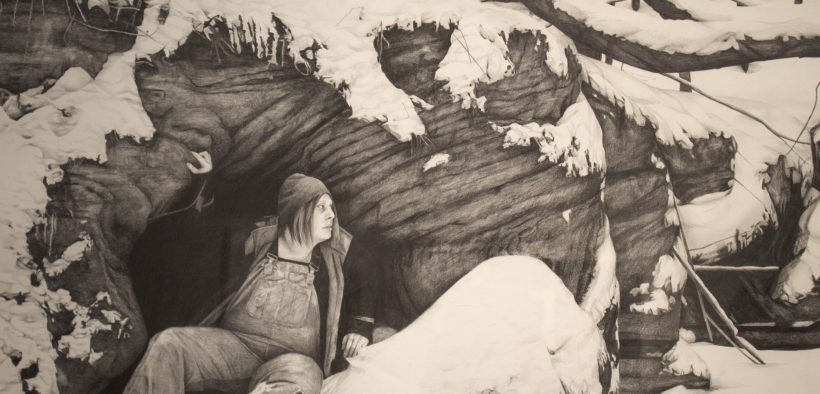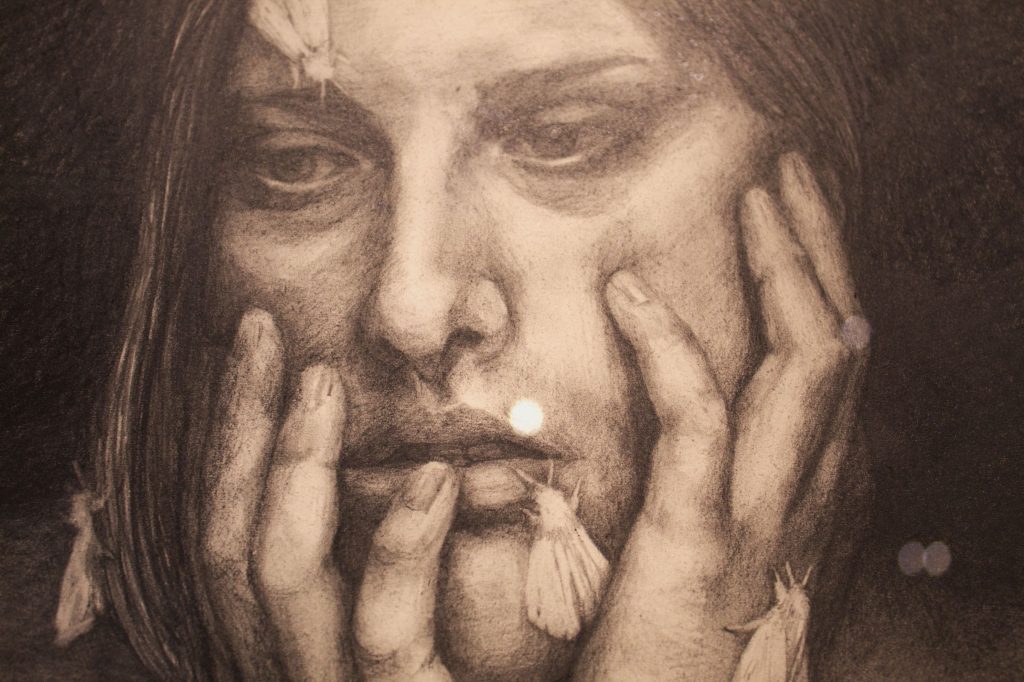Climate Change in the Art Gallery
Share

On October 5, the Southwestern Sarofim School of Fine Arts Gallery held the reception for the art exhibit created by the new Associate Professor Heidi Hogden (she/they) of the Studio Art department. “Disrupted Terrain: Visual Autobiographies of the Natural World” features large pieces in the medium of graphite drawing and stone lithography, each depicting Hogden herself as the central image. She states that the exhibit intends to “reveal the ways in which climate change has impacted the world”, as well as focus on “sexuality, disability, and physiological state”.
While Professor Hodgen is new to Southwestern University, they have been teaching in higher education for thirteen years. As an undergraduate, she attended the Minneapolis College of Art, before attending design and graduate school at the Museum of Fine Arts in affiliation with Tufts University. She explains that she “developed an abstract body of work dealing with nature, in full color and using natural forms to emulate micro and macro natural worlds.” In graduate school, Hogden began to work with representational images and moved to mainly graphite drawings on paper as her medium. During their time as an educator, they felt it important to continue her independent work and has been featured in spaces nationally and internationally.
As Hodgen stated in her reception speech, “by placing myself outdoors and depicting the effects of survival and extreme weather conditions, I reveal the ways climate change is creating havoc worldwide, and how recent weather events are a prelude to what is to come.” Six of the artworks in the gallery are dedicated to climate change. Three of the pieces of graphite drawing depict a memory of drought in Arizona, where the temperature reached 120 degrees Fahrenheit due to global warming, while another three show their childhood home in Wisconsin at -30 degrees, blanketed in snow. She says that she grew up in “the backwoods of Wisconsin. I climbed trees and rode horses. My father was a chemist, and my mother was a plain-air painter, and these experiences have really shaped me as an artist, in the combination of the natural and human worlds.” All six of these pieces have names drawn from lines in survival guides, such as “Plan ways to attract the attention of search and rescue teams” and “Fire will be the primary concern in most arctic emergencies”, as if showcasing a visual illustration of these lines. “I call them visual autobiographies because they’re not related to experiences that are outside of the ones that I’ve experienced,” Hodgen explains, “I think art is just another kind of language.”

While the majority of the gallery is focused on their experience at the center of climate disasters, Hodgen also details one piece for the symbolic relationships between humans and animals. The stone lithograph titled “Becoming Animal”, depicts animalistic instincts to explore “realism in the fantastic and metamorphosis”. Another lithograph, “Opening the Wound”, shows Hodgen’s journey as medical causes led her to undertake a surgery that removed several of her internal organs, her hands hooked into her stomach to reveal the “rotting interior”.
One of the pieces presented in the gallery was created during a high-impact experience that Hogden attended, along with four students. They had been invited to visit the Tamarind Institute, part of the University of New Mexico system, and were each paired with a printmaker to create an image in one week. “I hadn’t worked extensively in stone lithography before,” Hodgen says, “I was learning something new again.” She explains that she believes the students also learned something vital about art during the experience, alongside the physical skill of printmaking. Hodgen says, “I am very emotional, and I don’t typically make work in front of other people…There’s a lot of struggle that you go through as an artist. A lot of times we fail; we have to get back up again on the horse and try to overcome some of these failures. And so, I think it also was really impactful, for them to witness me struggle and get through it and create”.
Hodgen is currently teaching Representational Painting, Drawing, and Printmaking Capstone. Next semester, they will be teaching Drawing Two and Drawing Three, as well as Intermediate Seminar and Abstract Painting. She explains that, as an educator, “my goal is to position students to creatively address environmental and social concerns in order to understand the world and themselves…I educate my students to have the same level of engagement with the world around them by dedicating their creative energy to making it a better place.”
“Disrupted Terrain: Visual Autobiographies of the Natural World” will be open until November 16.
